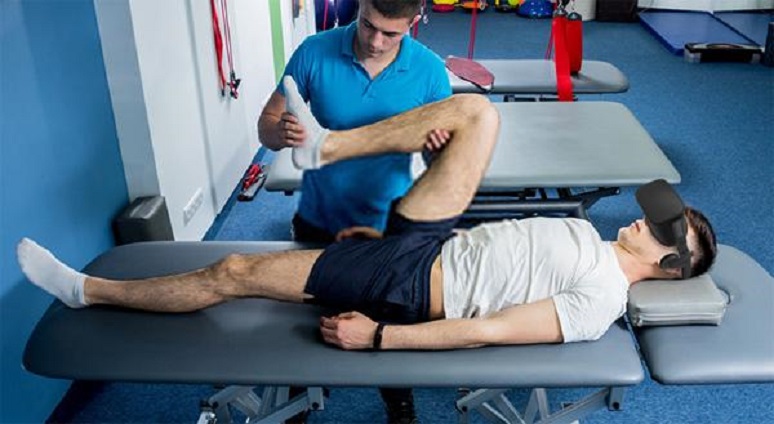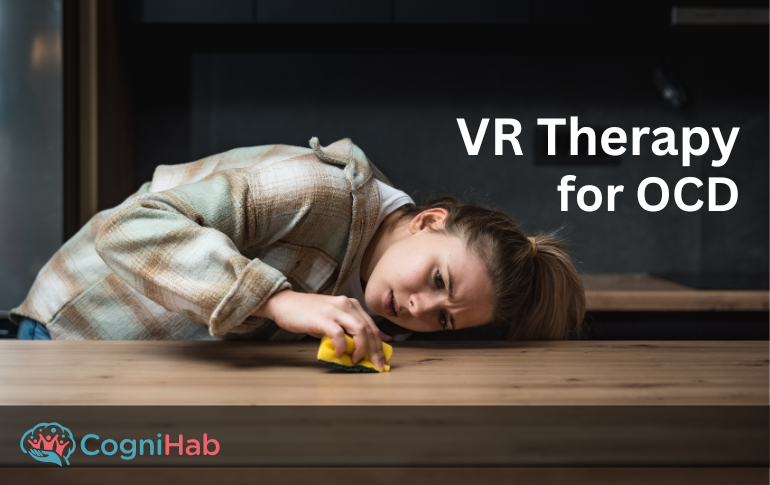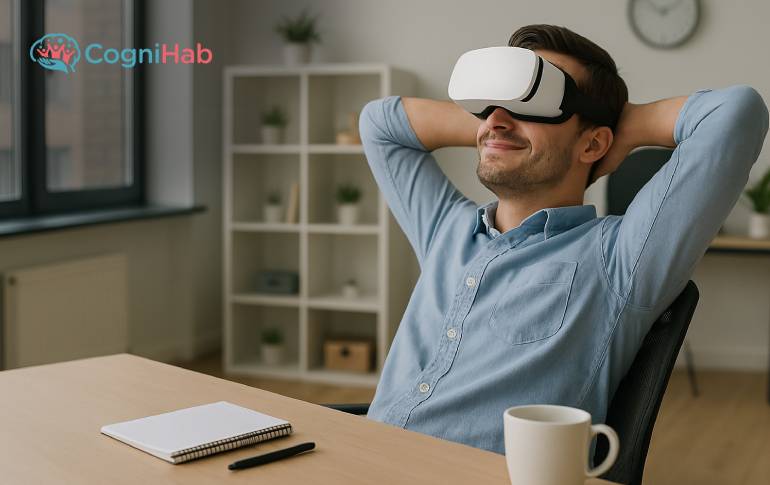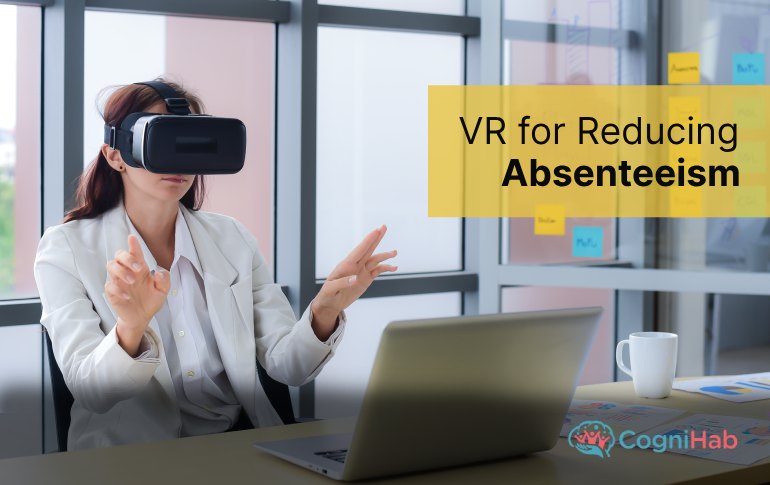How Virtual Reality is Changing Healthcare Future? 10 Examples
Once a pioneer in gaming, Virtual Reality has a come long way in becoming a pivotal tool for the healthcare industry. Now it is changing the healthcare future with its advanced and cutting edge solutions for hospitals and patients.
Be it patients looking to follow Virtual Reality in rehabilitation, reduce pain perception, feel less anxious or rectify their vision disorders, or be it healthcare providers looking to provide customized interventions, perform robotic surgeries or simulate critical procedures, the use of VR healthcare solutions comes across an ally to the entire healthcare ecosystem future.
More so the budding doctors have started using Virtual Reality to immersive learn medical concepts & perform virtual dissections.
Below we will discuss the top 10 ways how virtual reality is changing the healthcare future
1. Pre-operative planning
Planning and getting prepared for a complex surgery is a task in itself. Through VR, surgeons can walk through the whole procedure and even rehearse it entirely.
Using MRI, CT scans can build a 3D model of the affected part. It can go through the complexities of it again and again. This leads to lesser risks, better treatment, and also fewer surprises they face during the procedure. Augmented and virtual reality technology is considered as one of the most prominent uses in the future of surgery.
2. Education and Training
VR is used to train the doctor and the medical students in certain procedures. Like in anatomy, they use cadavers to work on dead bodies but there are one too many students for each cadaver.
No one wants to donate their dead body, and also there is the cost issue for maintaining such labs.
In this case, students can work on the virtual body, computer-generated obviously, and with the use of the VR controllers make their way through an operation.
It makes them well aware as most people have visual grasping capacity more than reading grasping capacity.
3. Pain Management
Virtual reality pain management immerses the patients in a computer-generated journey that is relaxing and alleviates their mood.
In cases where the patient is allergic to anesthesia, VR makes them forget their pain during painful invasive procedures.
It also comes into play when the patient is doing physical therapy as it takes those exercises and qualifies them to keep less focus on the pain and focus more on the exercises.
And all this can be provided in the comfort of their homes and can be monitored and checked by the doctor by the click of the computer button.
4. Stress Relief
Virtual Reality has been helping patients deal with stress, depression, anxiety disorder, etc. The patients can use VR to take their minds off stressful situations & scenarios.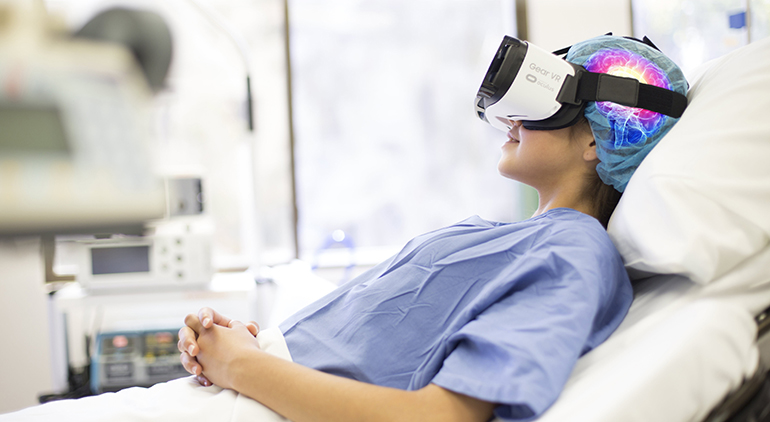 VR is known to bring down the anxiety level by 300% and is also known to increase the happiness quotient by 66%. Imagine being immersed in an environment of snowy mountains or a clean beach.
VR is known to bring down the anxiety level by 300% and is also known to increase the happiness quotient by 66%. Imagine being immersed in an environment of snowy mountains or a clean beach.
5. PTSD and Phobia Treatment
PTSD is a well-known problem amongst soldiers and is not easily treatable. Recent research has found that VRET (Virtual Reality Exposure Therapy) can be an efficient tool in treating this problem.
The patients are gradually introduced to difficult stimuli and their reactions are also noted down. With this sensory approach, the patients may recover faster.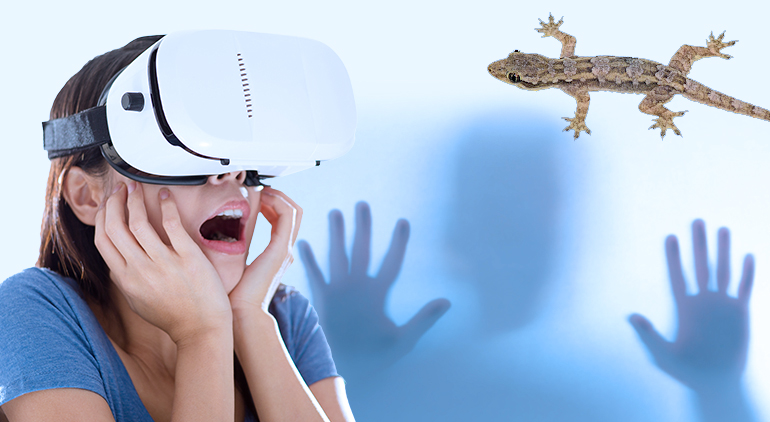 Also in treating phobias, gradually being exposed to the object of fear in the virtual environment may help relieve the fear in real life.
Also in treating phobias, gradually being exposed to the object of fear in the virtual environment may help relieve the fear in real life.
6. Addiction Problems
In addition to the use of Virtual Reality in healthcare, VR has been playing a pivotal role in helping people get rid of their addiction problems.
In situations where the person is addicted to drinking, smoking, drugs, or other such habits VR takes the people to a tour of their own body, it shows them the impact created by such addictions on their own body and thus helps them realize the importance of fighting through the addictions to win over them.
Along with such body tours, people are also shown distracting journeys, mindful journeys to help them stay motivated in their fight against their addictions.
7. Making patients feel at home
One of the factors of restlessness in patients in hospitals is that they are away from home, away from their relatives, and are mostly alone with no communication.
Best VR healthcare companies around the globe have been trying to create VR applications for patients in hospitals to take a tour of their home, or if they require to take a tour of a rocky mountain, a valley. This is done to elevate their mood and for them to have a positive approach towards their treatment.
Many companies have made Autism related VR games, VR interactions, VR journeys to help the autistic have normal social development.
In such interactions, the kid is having interactions with classmates in the class, in the hallway, in the park, in the cafeteria, etc. virtually through a virtual reality headset.
8. Games in Vision Therapy
If one is willing to understand How VR is changing the healthcare future then they need to observe the impact VR has made in vision therapy. Vision issues like Amblyopia, Convergence, Accommodation, etc. can be treated using VR interventions.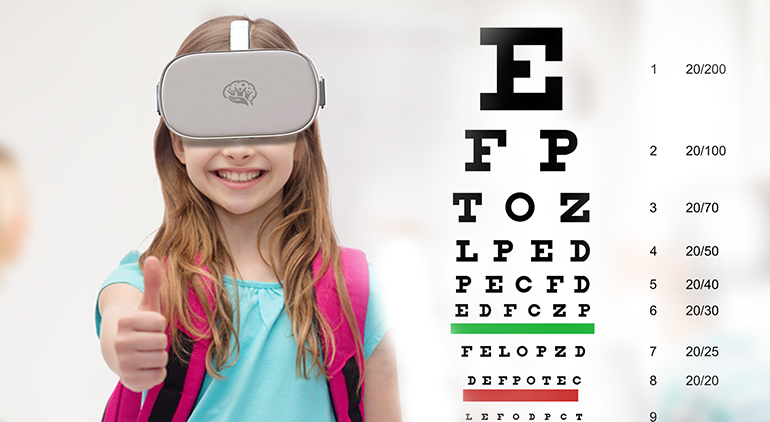 For instance, in Amblyopia instead of patching the patient is made to see some part of the environment with a weak eye. In other parts of the environment with a strong eye. In order to complete the task, the patient is thus forced to coordinate between both the eye.
For instance, in Amblyopia instead of patching the patient is made to see some part of the environment with a weak eye. In other parts of the environment with a strong eye. In order to complete the task, the patient is thus forced to coordinate between both the eye.
9. Recovery from Stroke
VR healthcare solutions in stroke rehabilitation can help patients overcome challenges like mobility and balance.
With an increased number of attempts in VR, patients become more confident when moving around in real life.
In VR, the therapist can control the patient’s environment and gradually expose them to more challenging conditions and give them feedback about how to respond.
10. Educating Patients
Since the patients are already stressed about the procedure they are undergoing. Augmented and virtual reality in healthcare education makes it comfortable for them to undergo the treatment by making them aware of every detailed information. Patients can be aware of what going to be applied during the treatment.
So before you finish reading, we would like you to have a look at this explanatory video on how virtual reality can help patients and doctors access the situations better.
Immersive treatment modules help them learn not just the treatment but also their disease and how the treatment will affect the disease.


